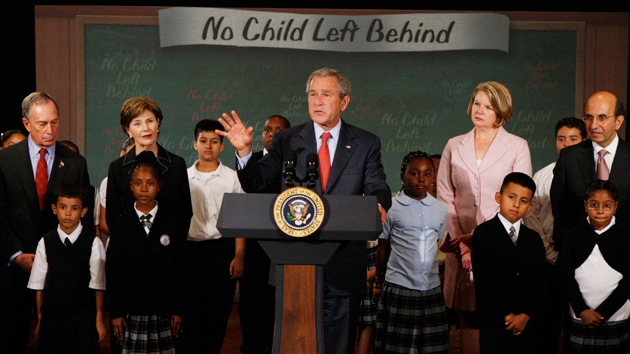
The media powerfully pounced on Secretary of Education Betsy DeVos when she championed school choice as part of her agenda. “School choice” in the principle that students should be able to receive monetary vouchers from the government if they choose not to be educated by the public-school system. Parents can use this money to send their students to a charter school or a private school, or homeschool their children. DeVos has not been able to push this agenda through Congress because the Democrats are united against her and Republicans are only scattered in their support, however, I believe the merits of school choice should be properly investigated.
The greatest argument for school choice is that it gives parents the right to choose how their children are educated. Theoretically, under this system the schools with the best performance ratings would receive the most students, and subsequently the most money. Other schools would have to compete with these schools to improve their ratings and therefore receive greater funds (“School Vouchers: Pros and Cons” ).
Those who support school choice argue that many times private schools provide a better education than public schools. A recent study by GallUp reported that those who were privately educated oftentimes have better long-term outcomes than those that were educated by the public-school system (Torres). It is important to note, however, that children who go to private schools are mostly from higher-income families and therefore are predestined to have more opportunities than their lower-income counterparts at birth.

Another argument for school choice is that public schools are very inefficient at spending government funds. Former President George W. Bush passed the No Child Left Behind Act to reward schools with productive educational outcomes and punish those that were underperforming. The program itself is a strong source of evidence that the bureaucracies that control public education are not spending tax-payer money as wisely as they should be (the Atlantic). In contrast, many private schools are fairly efficient at spending student funds. In a study conducted by the Cato Institute, it was found that the Washington D.C. public school system spent an average of $28,000 per public school student, while prestigious private schools such as Lowell School charge tuitions of $25,120 (“School Vouchers: Pros and Cons” ). This is largely because private schools have more discretionary power over their spending. In the public-school system, teachers are paid based on seniority and number of advanced degrees rather than performance. So, maybe the problem isn’t how much money public schools receive. Rather, it’s the lack of freedom they have when it comes to distributing their funds. It is also important to note, however, that private schools do not need to pay for student transportation or lunch programs.
Despite these arguments, however, we need to closely examine the repercussions if school choice was implemented. Firstly, school choice could invade the separation between church and state. Many private schools have a religious component. Theoretically, there are methods that could be implemented to ensure that all of the funds from government-issued voucher would only be used to fund secular school activities, however, this process would be very complicated and would only serve to spread the inefficiencies of the bureaucratic system to private schools.
Additionally, a theoretical voucher system would not necessarily provide students with full tuition. Therefore, lower class students would end up having to attend public school anyway, but the public school would now have even less resources. This system would only be benefitting students that could already afford to attend these schools. For example, Indiana has a voucher program “that now costs the state approximately $50 million more in state money going to education costs than originally budgeted. One third of Indiana voucher students were not considered low-income, and, increasingly, the voucher students are from suburban, middle class families who already have access to good public schools. Only 1% of Indiana voucher students were leaving failing schools” (“School Vouchers – Top 4 Pros and Cons” ). This example shows that vouchers aren’t really benefitting lower-income students, they are just helping middle- and upper-class students that already had the resources to attend private schools.
In contrast, however, Milwaukee has a student voucher program that has proven quite successful. The students in the voucher program are given the opportunity to attend prestigious educational institutions and have therefore been performing academically quiet well according to standardized tests. These institutions have to limit the number of voucher students they allow in, however, because the Milwaukee voucher does not cover the total cost of tuition, leaving the private schools to cover the rest of the cost (Hobbs). Therefore, even in a successful voucher program, the scope of the program’s success is limited.
The idea of a tuition voucher is nice in theory, because it gives parents more choice in how their children are educated, helps middle class families save money, and gives lower class students academic opportunities they otherwise would not have. In execution, however, “school choice” actually hurts lower-income students the most, as it funnels money out of the public-school system and into the pockets on middle- and upper-class students.
Sources
Hobbs, Tawnell. “Do School Vouchers Work? Milwaukee’s Experiment Suggests an Answer.” The Wall Street Journal, Dow Jones & Company, 28 Jan. 2018, www.wsj.com/articles/do-school-vouchers-work-milwaukees-experiment-suggests-an-answer-1517162799.
Quinton, Sophie. “The Lessons of No Child Left Behind.” The Atlantic, Atlantic Media Company, 24 Apr. 2015, www.theatlantic.com/politics/archive/2015/04/the-lessons-of-no-child-left-behind/431970/.
“School Vouchers: Pros and Cons.” Penn Wharton Public Policy Initative, publicpolicy.wharton.upenn.edu/live/news/1076-school-vouchers-pros-and-cons.
“School Vouchers – Top 4 Pros and Cons.” ProConorg Headlines, www.procon.org/headline.php?headlineID=005354.
Torres, Amanda. “New NAIS-Gallup Report on Student Outcomes.” NAIS – Brainology, 2018, www.nais.org/magazine/independent-school/winter-2018/life-lessons/.
“What Is School Choice?” EdChoice, www.edchoice.org/school-choice/what-is-school-choice/.